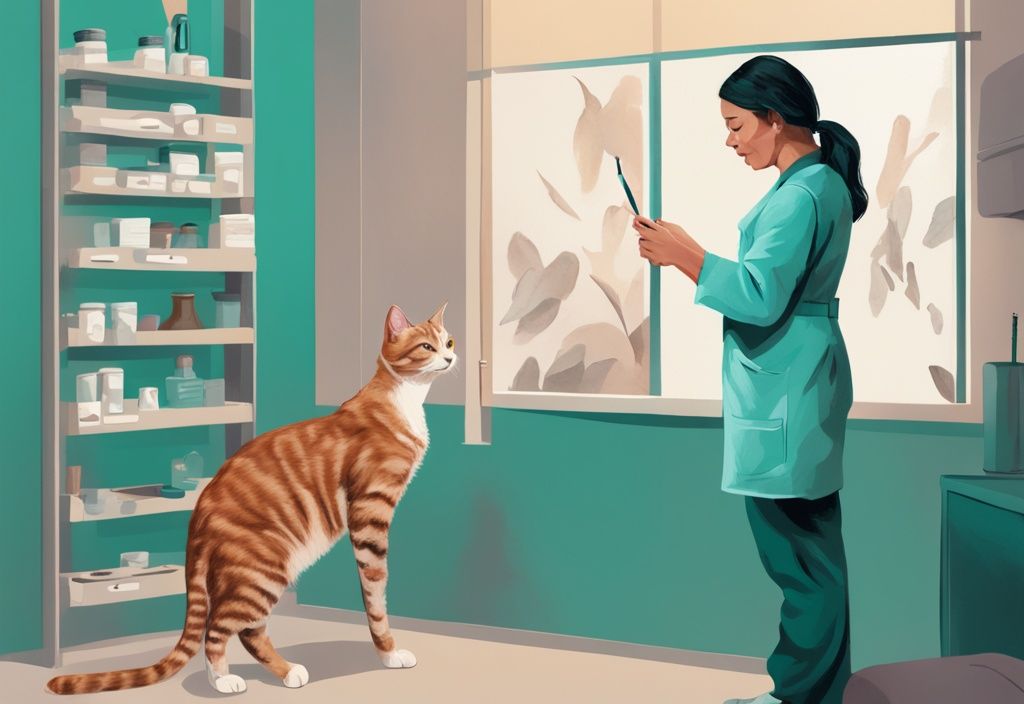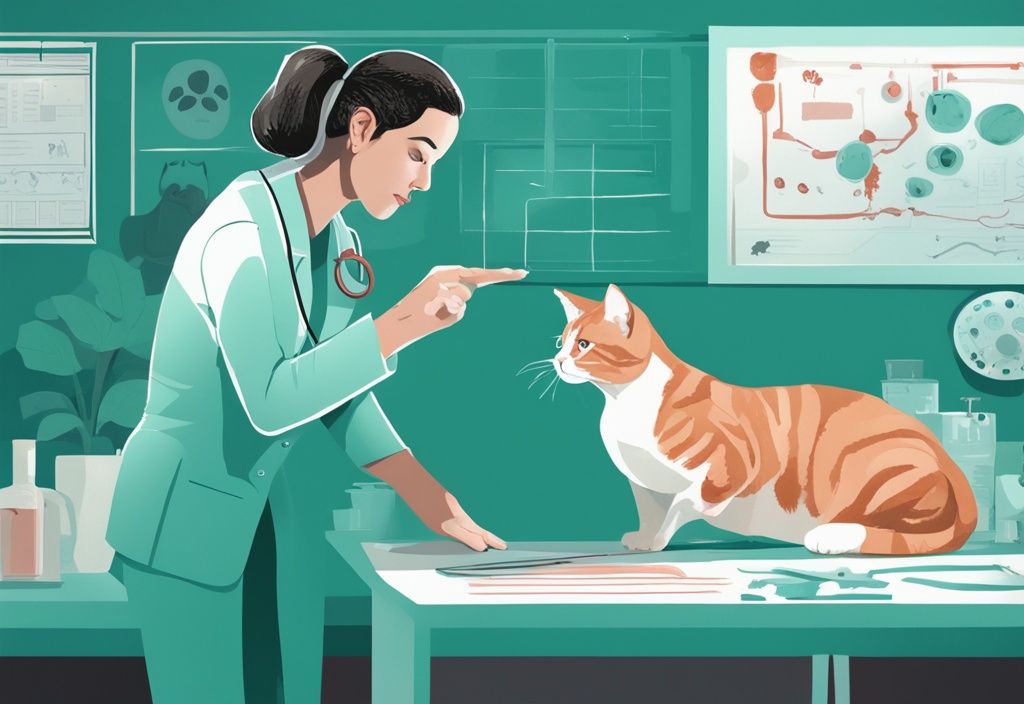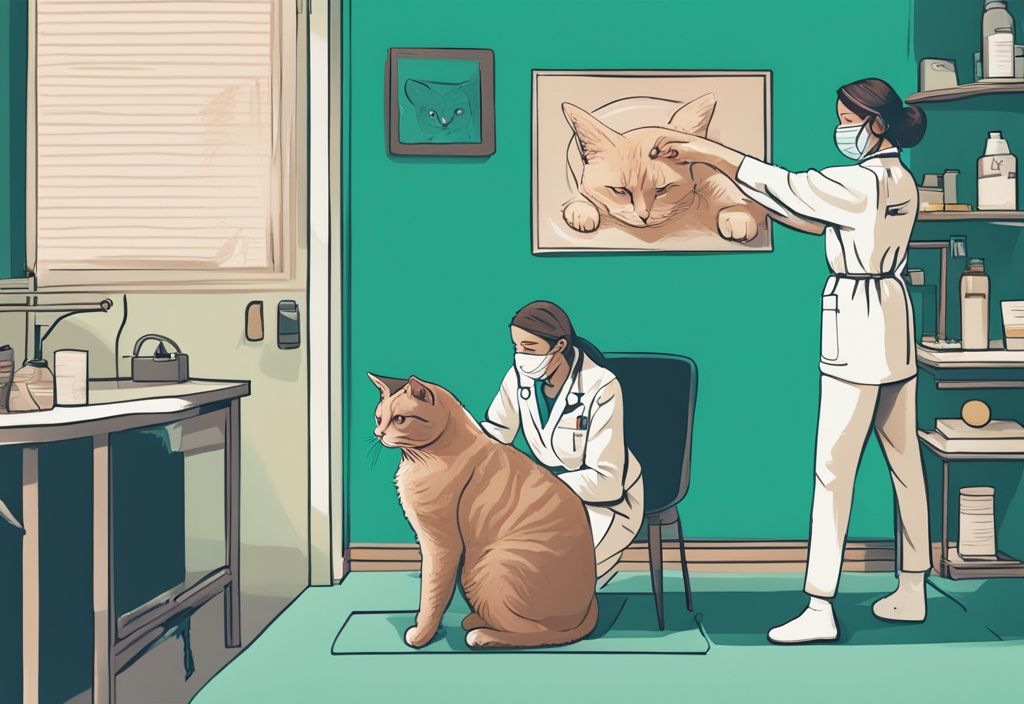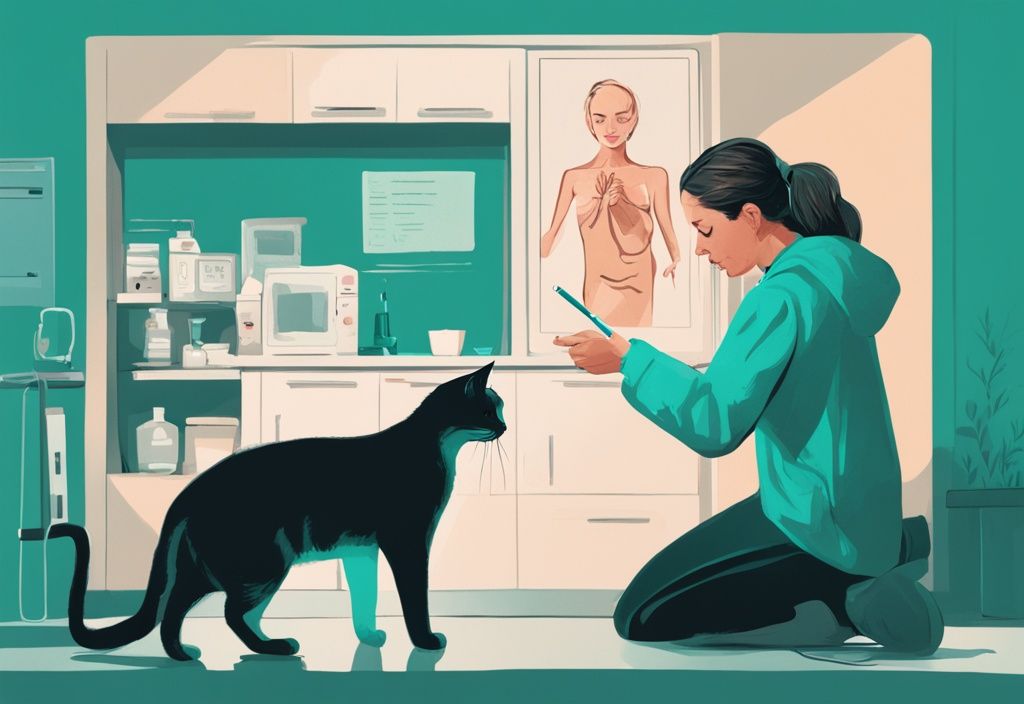Did you know that your feline friend could be silently suffering from a cat hernia? It’s a sneaky little condition that can creep up without warning, potentially causing serious health issues for your beloved pet. But don’t worry, we’re here to help you spot the signs early and keep your kitty in tip-top shape!
In this article, we’re going to delve into the world of cat hernias, exploring the different types, identifying symptoms, and discussing the best treatment options. It’s like a roadmap to your cat’s health, ensuring you’re well-prepared to navigate any bumps along the way.
So, are you ready to become a cat hernia expert and ensure your furry friend stays healthy and happy? Let’s dive right in!
What is a Cat Hernia?
Cat hernias might sound like a complex topic, but fear not! This section delves into the fascinating world of cat hernias, exploring their types, causes, and the importance of early intervention. Whether your feline friend is a sprightly kitten or a wise old cat, understanding hernias can make all the difference in their health journey.
Understanding Cat Hernias
Picture this: your cat’s organs or fatty tissues deciding to take a little detour through a weak spot in the muscle or connective tissue. That’s a cat hernia for you! While these aren’t the most common issues, they can often be sorted out with a bit of surgical magic, especially if caught early. Hernias in cats can be congenital—like a surprise gift at birth—or acquired due to things like trauma or other sneaky underlying conditions. Knowing the ins and outs of cat hernias is crucial for jumping into action when needed.
Common Types of Cat Hernias
Diaphragmatic Hernias
Diaphragmatic hernias are like uninvited guests at a party, either showing up from birth or crashing the scene after a traumatic event. These hernias involve organs making their way into the chest cavity, which can squish the lungs a bit. Cats with these hernias might seem to have trouble breathing or act like they’re running out of lung space. Spotting these early is key to keeping those kitty lungs happy and healthy!
Hiatal Hernias
Hiatal hernias are the rare gems of the hernia world, often linked to congenital quirks. Imagine the abdominal viscera deciding to take a trip through the diaphragm! Cats with hiatal hernias might show signs of regurgitation or struggle with swallowing. Given their rarity, these hernias need a careful eye and a gentle touch to ensure your cat stays in tip-top shape.
Inguinal Hernias
Inguinal hernias like to hang out in the groin area and are more common in pregnant female cats. These can turn serious if the intestines decide to take a detour and get trapped. Keep an eye out for a bulge in the groin area or any signs of discomfort. A quick trip to the vet can nip this in the bud and keep your feline friend purring happily.
Umbilical Hernias
Umbilical hernias are the little bumps near your cat’s belly button that usually don’t cause a fuss. Most of the time, they resolve themselves by the time your kitty is 3 to 4 months old. But if they decide to stick around, a bit of surgical intervention might be on the cards to prevent any hiccups. Keeping an eye on these and getting an early assessment is the way to go!
Perineal Hernias
Perineal hernias like to make their presence known near the anus, especially in older, unneutered male cats. Symptoms might include swelling near the anus and a bit of trouble with bathroom duties. Surgery is often the hero of the day, swooping in to fix things and improve your cat’s quality of life. Catching these early can make a world of difference!
Recognizing a Cat Hernia: Symptoms and Signs
When it comes to our feline friends, knowing the signs of a cat hernia is crucial for their health and happiness. This section will guide you through spotting the symptoms and understanding when to seek help.
How to Spot a Hernia in Your Cat
Oh, the joys of being a pet parent! It’s like being a detective, always on the lookout for clues. One of those clues might be a cat hernia. Picture this: you’re giving your cat a belly rub, and you notice a little bulge, like a tiny pillow under the skin. These bulges can pop up around the abdomen, groin, or near the belly button. What’s happening here? Well, it’s like a game of peek-a-boo with an organ or tissue sneaking through a weak spot.
But wait, there’s more! Cats with hernias might start acting a bit off. Think of it as their way of waving a little flag saying, “Hey, something’s not right!” A sudden disinterest in their favorite fishy treats? That’s a red flag. Feeling down or unusually sleepy? Another clue. And if your kitty starts throwing up, it’s definitely time to pay attention. If you’re worried about severe health issues, you might wonder how much it might cost to put a cat to sleep. Other signs to keep an eye out for include blood in the urine, unexplained weight loss, mood swings, or even trouble breathing. It’s like they’re sending out an SOS!
When to Seek Veterinary Help
Now, here’s where you put on your superhero cape. If you spot any of these signs, it’s time to swoop in and get your kitty to the vet. Early action is your best friend here, helping to keep things from spiraling out of control. Regular vet check-ups are like a safety net, catching any sneaky hernias before they become a big deal. By keeping up with these visits, you’re not just taking care of your cat’s health—you’re also making sure they’re living their best, most playful life. And isn’t that what being a pet parent is all about?

Causes and Risk Factors of Cat Hernias
Cat hernias are a curious thing, aren’t they? They can pop up due to a mix of congenital quirks and life’s little bumps. Let’s dive into the world of cat hernias and explore what makes these pesky pouches appear.
Why Do Cats Get Hernias?
Picture this: a kitten born with a tiny hiccup in its development, a congenital hernia, if you will. These hernias are like a surprise party no one really asked for, present from birth due to developmental anomalies. But that’s not the only way hernias can crash the party.
Imagine Whiskers, my cuddly rescue cat, having a bit too much fun and taking a tumble. Trauma or injury can be a major culprit, creating a weak spot in the muscle or connective tissue. It’s like when Max, my Border Collie, gets a bit too enthusiastic with his zoomies and knocks over a lamp—unexpected and a little chaotic!
Other factors sneak in too, like weak muscle walls, certain diseases, or just the natural aging process. And let’s not forget about those times when excessive bloating, pregnancy, or constipation decide to add extra pressure on the abdominal walls, leading to a hernia. Oh, the drama!
For our feline friends who’ve been spayed or neutered, it’s crucial to keep their post-op antics in check. Too much physical activity too soon can disrupt healing and invite a hernia to join the mix. So, a little rest and relaxation are key!
Preventing Acquired Hernias in Cats
Now, let’s talk prevention. Keeping your cat at a healthy weight is like giving them a superhero cape, protecting those abdominal muscles from extra strain. Obesity can be a sneaky villain, so maintaining a balanced diet is essential.
Creating a safe environment for your cat is another heroic move. Think of it as setting up a fortress where injuries are less likely to happen. Monitor their activities, and maybe avoid letting them attempt any feline parkour!
While we can’t prevent congenital hernias, early detection and treatment can manage them effectively. It’s like catching a plot twist early in a movie—better to be prepared!
For those post-surgery days, following the vet’s instructions is crucial. Restricting physical activity ensures proper healing and keeps hernias at bay. It’s like giving your cat a spa day—rest, recover, and rejuvenate.
When considering various treatments and preventive measures, pet owners often ask, “is Vaseline safe for dogs”? By embracing these preventive measures, you can help your furry friend avoid the unwanted company of acquired hernias. After all, a little care goes a long way in keeping our pets happy and healthy!
Diagnosis and Importance of Early Detection
When it comes to our furry friends, catching health issues early can make all the difference. Cat hernias, those sneaky little bulges, can be tricky but not impossible to spot. Let’s dive into how vets work their magic to diagnose these pesky problems and why regular check-ups are your best friend in keeping your cat purring happily.
How Vets Diagnose Cat Hernias
Imagine you’re a detective on a mission, just like my Border Collie, Max, when he’s sniffing out a hidden treat. Vets take on a similar role when diagnosing cat hernias. They start with a thorough physical examination, gently palpating your kitty’s body to detect any unusual bulges or swelling. If a hernia is suspected, out come the high-tech gadgets! X-rays and ultrasounds are like the magnifying glasses of the veterinary world, offering a detailed peek inside. These tools help pinpoint the exact location and size of the hernia, ensuring nothing is left to chance.

Why is early detection so crucial? Well, catching a hernia early means we can jump into action, reducing the risk of complications and boosting the odds of a successful treatment. It’s like catching a small leak before it turns into a flood.
The Role of Regular Vet Check-ups
Now, let’s talk about the unsung heroes of pet care—regular vet check-ups. Think of these visits as your cat’s version of a spa day, where they get pampered and checked from head to paw. During these routine visits, vets keep a keen eye on your cat’s overall health, spotting potential issues like cat hernias before they become serious headaches.
Early intervention is the name of the game here. By catching hernias early, we can minimize complications and improve the prognosis. Plus, vets offer invaluable guidance on preventive care, tailoring their advice to your cat’s unique needs. It’s like having a personal trainer for your feline friend!
So, by sticking to a schedule of regular check-ups and following your vet’s advice, you’re ensuring your cat’s health and well-being. You’ll catch any hernias early and address them promptly, keeping your furry companion happy and healthy. After all, isn’t that what we all want for our whiskered buddies?
Treatment Options for Cat Hernias
When it comes to treating cat hernias, there are a couple of paths you might find yourself wandering down. The choice between non-surgical and surgical approaches often hinges on the hernia’s severity and type. Let’s dive into these options and see what might work best for your feline friend.
Understanding Non-Surgical and Surgical Approaches
Ever tried to convince a cat to do something it doesn’t want to do? It’s a bit like trying to manually reposition organs in a minor, uncomplicated hernia—possible, but only in specific cases. For those trickier hernias, where organs are stubbornly out of place or complications arise, surgery is the hero of the day. This involves a bit of a cat nap (under anesthesia, of course), during which the vet will reposition the organs, repair any affected tissue, and close up the muscle wall to keep everything snug and secure. It’s a thorough approach that ensures your whiskered companion is back to their playful self in no time.
Preparing Your Cat for Surgery
Getting ready for hernia surgery is like prepping for a big adventure. Your vet will run a few tests—think of it as a pre-flight checklist—to make sure your cat is in tip-top shape. Blood chemistry, complete blood count, and urinalysis are all part of the routine. Follow the vet’s instructions closely, which usually means fasting your cat the night before. It’s all about minimizing risks and ensuring a smooth ride through anesthesia.
What Happens During Hernia Surgery?
Picture this: your cat is comfortably snoozing under general anesthesia while the vet works their magic. The displaced organs are gently coaxed back to their rightful spots, and the muscle wall is stitched up with sutures or synthetic mesh for added support. The goal? Restore normal anatomy and function, reduce the chance of another hernia, and ultimately boost your cat’s quality of life. It’s a bit like a home renovation, but for your cat’s insides!
Caring for Your Cat Post-Surgery
Ah, the post-surgery phase—a time for tender loving care. Your vet will likely prescribe antibiotics and pain relief to keep infections and discomfort at bay. Keep an eye on the surgical site, and don’t forget the Elizabethan collar to stop any curious licking or biting. Limiting your cat’s activity is crucial—think of it as a little vacation for their healing body. With these steps, your cat will be back to their usual antics before you know it!
Understanding the Costs and Prognosis of Cat Hernia Surgery
Cat hernias can be a bit of a puzzle, but don’t worry, we’re here to unravel it! Let’s dive into the nitty-gritty of what you can expect in terms of costs and recovery when it comes to cat hernia surgery. Whether you’re a seasoned pet parent or new to the feline world, understanding these aspects can make the journey smoother for both you and your furry friend.
How Much Does Cat Hernia Surgery Cost?
Ah, the million-dollar question—or hopefully, not quite that much! The cost of cat hernia surgery can swing quite a bit, much like my Border Collie, Max, when he’s trying to catch his tail. Factors like where you live, the vet’s fees, and the complexity of the hernia all play a part. Typically, you’re looking at a range from $250 to $1100. It’s a good idea to have a chat with your vet about payment options. Some clinics might offer flexible plans or accept pet insurance, which can really help lighten the load. After all, we want to focus on cuddles, not costs, right?
What to Expect After Cat Hernia Surgery
Once your kitty has had their hernia sorted out, the recovery phase kicks in. Most cats bounce back quickly, especially if the hernia was caught early. It’s a bit like watching Whiskers after a nap—one moment they’re snoozing, the next they’re zipping around the house! Follow-up appointments with your vet are key to ensuring everything heals properly and to keep any pesky hernias from making a comeback.

Creating a serene space at home is essential for recovery. Think of it as setting up a spa day for your cat—minus the cucumbers on their eyes! Keep things calm, and make sure they have a cozy spot to rest. Stick to the vet’s post-op instructions, which might include giving meds and keeping playtime gentle. With a bit of TLC, your feline friend will be back to their playful self in no time.
FAQ
Curious about cat hernias? Let’s dive into the nitty-gritty of these pesky but manageable conditions. From types to treatments, here’s what you need to know to keep your feline friend purring happily.
What are the most common types of hernias in cats?
Oh, the world of cat hernias is quite the mixed bag! You’ve got your diaphragmatic, hiatal, inguinal, umbilical, and perineal hernias. Each one has its own quirks—like unique little puzzles waiting to be solved. And just like Whiskers, my cuddly rescue cat, each hernia type needs a special touch to ensure your kitty stays in tip-top shape.
Can cat hernias heal on their own?
Here’s a little nugget of hope: some umbilical hernias might just decide to fix themselves by the time your kitten is 3 to 4 months old. But don’t pop the champagne just yet! Most hernias are stubborn little critters and need a vet’s magic touch to avoid any sneaky complications.
How long does recovery from hernia surgery take?
Ah, the road to recovery! It usually takes a few weeks, but think of it as a spa retreat for your cat. Following your vet’s post-op care instructions is like giving your kitty a VIP pass to a smooth and speedy recovery. And trust me, a happy, healthy cat is worth every moment of TLC.
What should I do if I suspect my cat has a hernia?
If your instincts are tingling and you suspect a hernia, don’t play detective! Instead, whisk your cat off to the vet for a proper diagnosis and treatment. Remember, early intervention is the secret sauce to a happy ending. So, put down that magnifying glass and let the professionals work their magic.
Conclusion
Cat hernias might not be the talk of the town at your local cat café, but when they do pop up, they sure know how to demand attention! Just like my Whiskers, who once decided to play hide-and-seek with a suspicious lump, these sneaky conditions need quick action and the right treatment to keep your furry friend purring happily.
Now, let’s talk types—because cat hernias come in a variety of flavors, each with its own quirks. From the sneaky diaphragmatic to the shy umbilical, and even the bold inguinal, recognizing these types early can be a game-changer. Each one has its own set of symptoms, like a secret language only your kitty speaks, and they all need their own special treatment plans.
Regular vet check-ups are like the ultimate spa day for your kitty’s health. These visits are crucial for catching hernias early, nipping potential problems in the bud, and keeping your feline friend in tip-top shape. Plus, sticking to a healthy lifestyle can help prevent those pesky acquired hernias from crashing the party.
Staying informed about cat hernias is like having a superhero cape in your pet care toolkit. By knowing the symptoms and treatment options, you can take proactive steps to keep your cat’s health in check. Prompt vet care and following post-treatment advice will help manage this condition effectively, ensuring your whiskered buddy leads a happy, healthy life. After all, isn’t that what every pet parent dreams of?
